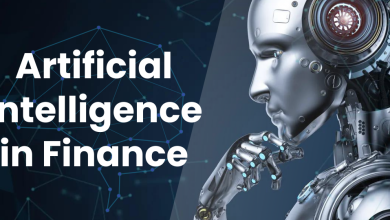
AI has moved from the lab to the boardroom. After years of theorizing and experimentation, leaders are done talking about potential—they want progress. They are focused on turning concepts into measurable outcomes, defining what success looks like, and moving decisively toward it. Yet despite the growing urgency and millions in investment, results often fall short of the promise. According to a report published by MIT’s NANDA initiative, 95% of generative AI pilots fail to deliver measurable ROI.
AI’s biggest barrier isn’t capability—it’s connection: aligning people, process, and governance to turn pilots into performance.
AI is no longer an experiment; it’s the new operating system for business. It’s reshaping how organizations think about talent, strategy, and culture. But its real power lies in how people use it: when teams are equipped, trusted, and aligned, AI stops being a project and becomes performance.
The Reality of AI Adoption
Across industries, AI adoption is accelerating. Experis research shows that 52% of large enterprises are already using AI, and nearly one-third of those not yet on board plan to roll it out within the next three years. The momentum is real, but so is the disconnect: adoption doesn’t guarantee impact.
This adoption curve signals progress—but also highlights the widening execution gap between experimentation and enterprise value.
Many organizations are deploying tools without the talent to manage them, the strategy to guide them, or the infrastructure to scale them. The result: enthusiasm that fizzles out before AI reaches the enterprise level. If a pilot is falling short, it’s worth asking whether it was designed to solve a real business problem or simply to test a capability.
Why AI Pilots Often Miss the Mark
Many AI pilots start strong but struggle to scale—revealing gaps in strategy, structure, and skills that surface only after launch. Most stall for familiar reasons:
- Weak governance. Issues of privacy, ethics, and data stewardship are not just regulatory concerns, but foundational to trust. Without clear frameworks, teams hesitate to engage, and customers question the integrity of AI-driven experiences.
- Poor integration. Too often, pilots run in isolation—disconnected from the systems, data, and workflows they are meant to enhance. Without seamless integration, scaling is almost impossible.
- Misaligned skills. Many organizations underestimate the skills required to design, monitor, and optimize AI systems responsibly. Without the right talent and oversight, even the best tools underperform.
In one recent project, Experis worked with a Fortune 500 financial services client to establish a governed AI framework that reduced manual reconciliation time by 40%. The breakthrough came not from new software, but from rethinking roles and investing in targeted upskilling—proving that people-first strategies drive measurable results.
A People-First Approach to AI
Technology alone won’t transform your business. People will. Success with AI starts by understanding how your teams work, where they struggle, and what support they need to thrive. Key strategies include:
- Redesigning roles. Rather than replacing roles, look closely at the tasks your teams handle every day. Which ones can be automated? Which ones require human judgment? You might find that automation frees up time for deeper, more strategic work without compromising trust or accountability.
- Upskilling and reskilling. Don’t limit AI literacy to your IT department. When you invest in cross-functional training, you unlock new perspectives. Our collaborative AI Workbench helps teams across functions build, test, and operationalize AI models securely—without deep technical expertise. By embedding governance into the process, it empowers employees to innovate responsibly and at scale.
- Clear alignment. Before launching a pilot, ask yourself what problem you’re solving and what success looks like. When you define those answers early, you give your teams a clear direction. You choose the right tools. You measure what matters. Without that focus, pilots tend to drift or get shelved.
- Governance as trust-building. Beyond compliance, governance is about trust. Embedding legal, compliance, and frontline voices early will help shape how you handle data, communicate changes, and build resilience. When guardrails are in place from the start, they don’t slow you down; they only strengthen your foundation.
AI is powerful, but it’s not plug-and-play. It requires thoughtful design, clear goals, and a deep understanding of the people who will use it. When you build with your teams—not just for them—you move from pilots to performance. In our recent work, that principle has come to life through creating dedicated Innovation and Data Labs—incubators for scalable AI initiatives—where teams can test, refine, and deploy solutions that address real business challenges.
What Leaders Can Do Differently
To move beyond pilots and unlock AI’s full potential, leaders must reframe how they approach AI:
- Start with strategy, not tools. Anchor AI deployments to clear business problems, not shiny technology. Once you know what you’re solving for, the right technology becomes easier to identify and easier to justify.
- Invest in talent. Build internal capability rather than relying solely on external vendors. That means hiring for adjacent skills, partnering with educational institutions, and creating space for your teams to learn and experiment.
- Pilot with purpose. Define hypothesis, success metrics, and iteration plans. Quick wins are useful, but they should connect to long-term goals and be designed to scale.
- Bridge technology and people. AI works best when it amplifies human decision-making. We’ve developed an in-house, conversational intelligence framework that integrates seamlessly into enterprise workflows—enhancing productivity, improving customer experience, and supporting ethical AI deployment. Its success lies in scaling responsibly while maintaining transparency and trust. When teams feel supported—not replaced—by the tools they use, adoption accelerates and impact deepens.
- Support career durability. Help your workforce build the skills they need to stay relevant—ethical reasoning, collaboration, and big-picture problem-solving. These are the skills that AI can’t replicate and your organization will rely on as technology evolves.
- Measure what matters. Track outcomes that reflect real business impact—time saved, accuracy improved, customer satisfaction increased. These are the metrics that build momentum and justify continued investment.
Leaders can also look to real-world applications for proof points. In one global deployment, we introduced AI-powered talent analytics to enhance the hiring lifecycle—reducing time-to-fill by 30% and improving quality-of-hire metrics. The project was incubated, tested, and scaled through an integrated AI ecosystem designed to ensure responsible experimentation and measurable business impact.
Create the Conditions for Success
AI’s potential is real. But unlocking it requires more than enthusiasm. It requires leadership.
You don’t need to be a technologist to lead AI initiatives. You need to be curious, people-focused, and strategic. That means asking the right questions, building the right teams, and creating the right conditions where technology and talent reinforce each other.
The organizations that thrive in this new era won’t be the ones that adopt AI first. They’ll be the ones that deploy with purpose—bridging skills gaps, embedding governance, and scaling solutions that put people at the center.




